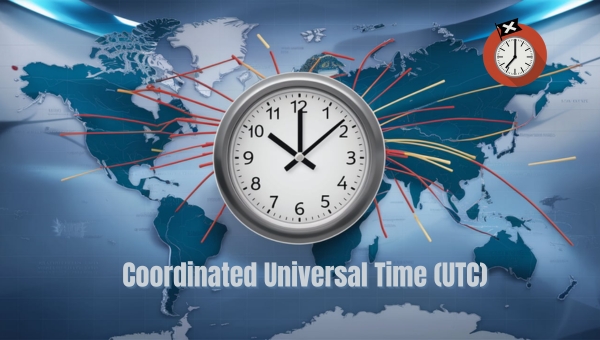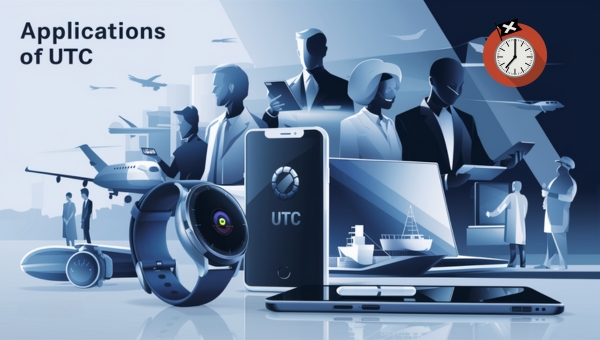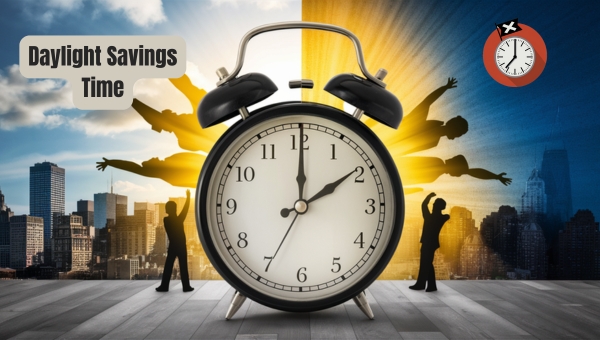Coordinated Universal Time (UTC): Your Best Guide

Coordinated Universal Time (UTC) is a cornerstone in the world of timekeeping. In this article, we’ll explore its structure, compare it with other time zones, and delve into its various applications. You’ll learn how UTC ensures global synchronization and plays a vital role in technology.
We’ll also discuss the challenges it faces, such as leap seconds and time zone confusion. By the end, you’ll have a comprehensive understanding of why UTC is crucial for modern life. Ready to dive in? Let’s get started!
Breaking Down The Coordinated Universal Time (UTC)
Coordinated Universal Time (UTC) is the primary time standard by which the world regulates clocks and time. It is precise and consistent, thanks to the use of atomic clocks. These clocks provide an accuracy of one second in millions of years, making UTC extremely reliable.

UTC is not influenced by Earth’s rotation, unlike previous systems. This time standard is essential for synchronizing global operations in various fields such as aviation, computing, and telecommunications. UTC is also the basis for civil time across the globe, ensuring that all local times are coordinated.
Importantly, it does not change with the seasons, offering stability and predictability. This makes UTC a cornerstone of modern timekeeping, which is crucial for the smooth functioning of numerous global systems.
Structure of Coordinated Universal Time (UTC)
Understanding the structure of Coordinated Universal Time (UTC) is essential for grasping how global timekeeping operates. This section delves into the fundamentals of UTC, focusing on its timekeeping system and how it compares to other time zones.

Timekeeping System
The backbone of Coordinated Universal Time (UTC) is its reliance on atomic clocks. These clocks measure time with incredible precision by monitoring the vibrations of atoms, usually cesium or rubidium.
This method ensures that UTC maintains a high degree of accuracy, which is crucial for various global applications.
Unlike other timekeeping systems, UTC integrates “leap seconds” as needed to keep it in sync with Earth’s slightly irregular rotation. This addition helps maintain the uniformity and reliability of timekeeping across the globe.
Comparison with Other Time Zones
When comparing Coordinated Universal Time (UTC) with other time zones, a few key points stand out:
- Greenwich Mean Time (GMT): While GMT is often used interchangeably with UTC, there are differences. GMT is based on the Earth’s rotation, whereas UTC relies on atomic time.
- Local Time Zones: Local time zones vary globally and can be ahead or behind UTC by several hours. These variations are due to the Earth’s longitudinal divisions and daylight saving practices in some regions.
- Standard Time Zones: Standard time zones are fixed offsets from UTC, such as UTC+2 or UTC-5, providing a consistent framework for international timekeeping.
Applications of UTC
Coordinated Universal Time (UTC) plays a pivotal role in many aspects of our modern world. It ensures that global systems run smoothly and that technology functions with precision. Let’s explore how UTC is applied in different fields.

Global Synchronization
UTC is essential for synchronizing various global systems and networks. It serves as a reference time for:
- Internet infrastructure: Ensuring that web servers and networks operate seamlessly.
- Financial markets: Facilitating accurate time-stamping of transactions.
- Air traffic control: Coordinating flights across different time zones.
Role in Technology
UTC is integral to the functionality of numerous technologies. It aids in:
- GPS systems: Providing accurate positioning and navigation.
- Satellite communications: Ensuring precise timing for data transfer.
- Digital timestamps: Authenticating the timing of electronic documents and emails.
Challenges and Considerations
Navigating Coordinated Universal Time (UTC) isn’t without its hurdles. This section delves into some of the key challenges and considerations to bear in mind. We’ll explore the complexities surrounding leap seconds and the common confusions related to time zone conversions.
Leap Seconds
Leap seconds are added to UTC to keep it in sync with Earth’s rotation, which can be irregular. This adjustment, though necessary, brings various challenges:
- Technical Issues: Adding a leap second can cause problems in systems that rely on precise timing, such as GPS and financial trading platforms.
- Debate: There is ongoing debate about whether to continue with leap seconds or adopt a different method to keep timekeeping accurate.
- Impact on Timekeeping: These adjustments can lead to discrepancies and require constant monitoring to ensure that all systems are synchronized.
Time Zone Confusion
Converting UTC to local time zones often leads to misunderstandings. Here are some common issues people face:
- Daylight Saving Time: Changes due to daylight saving time can complicate the conversion process.
- Regional Variations: Different regions may have unique rules for timekeeping, adding to the confusion.
- Lack of Awareness: Many people are not fully aware of how to convert UTC to their local time, leading to errors in scheduling and communication.
Conclusion
Coordinated Universal Time (UTC) is a vital component in our globalized world, ensuring precise timekeeping across various sectors, from technology to finance. Its reliance on atomic clocks guarantees accuracy, and its role in synchronizing global systems cannot be overstated.
Despite challenges like leap seconds and time zone confusion, UTC remains indispensable. By understanding and utilizing UTC, we can better navigate time-sensitive tasks and improve international coordination.
If you found this article helpful, explore more insightful content on our site to deepen your understanding of crucial topics. Happy reading!





